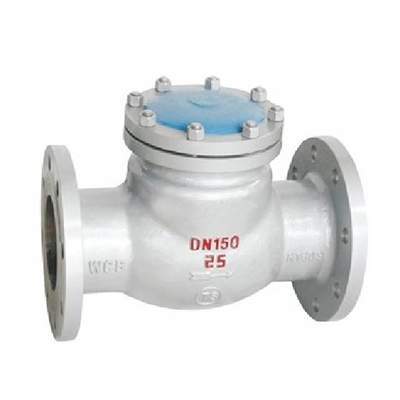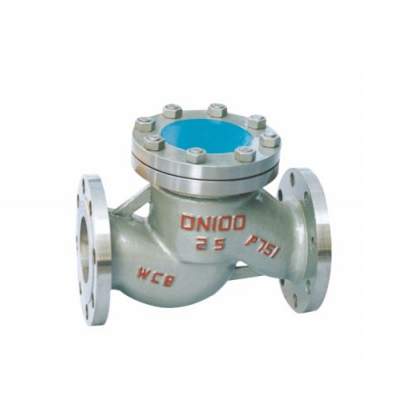Welcome to My Blog!
Before we dive into the content, if you’re interested in our products or have any questions, please feel free to visit our Contact Us page on the website. Our team is ready to assist you with inquiries, orders, or any support you may need.
Now, let’s get started on our journey together. I hope you find the content here insightful, engaging, and valuable.
Introduction

Small check valves are essential components in a wide variety of systems, ensuring that fluids flow in only one direction while preventing reverse flow, which could lead to contamination or damage. Whether you’re working in chemical processing, water treatment, or plumbing, selecting the right small check valve is critical to maintaining system integrity and efficiency. This article highlights the key considerations when selecting small check valves, including material selection, pressure ratings, and applications in various industries.
Understanding the Role of Small Check Valves in Fluid Systems
Small check valves play a vital role in many fluid systems by preventing backflow, which can contaminate clean fluid supplies or damage equipment. These valves allow fluid to pass in one direction and automatically close to prevent reverse flow. For example, in water treatment plants, backflow could contaminate the clean water supply, making reliable small check valves essential.
In chemical processing, the reverse flow could cause dangerous mixing of chemicals, leading to hazardous reactions. Choosing a small check valve ensures the safety and reliability of fluid systems, keeping operations running smoothly and without incident.
How to Choose the Right Material for Small Check Valves
The material chosen for a small check valve is critical to its performance and lifespan. The valve needs to withstand the specific conditions of the fluid system, including pressure, temperature, and chemical exposure.
- Stainless Steel: Ideal for applications involving corrosive or abrasive fluids, stainless steel is durable, resistant to corrosion, and can handle harsh conditions.
- Brass: A good choice for water systems, brass is known for its corrosion resistance, though it may not be suitable for highly acidic or abrasive environments.
- Plastic (PVC, CPVC, etc.): Often used for low-pressure, non-corrosive fluid systems, plastic valves are lightweight and cost-effective but may not withstand high temperatures or pressure.
Choosing the right material ensures that the valve performs reliably over time, even in harsh conditions.
Pressure Rating and Flow Capacity
The pressure rating of a small check valve determines how much pressure it can withstand before failure. It’s essential to choose a valve with a pressure rating that matches or exceeds the system’s requirements. For high-pressure systems, like those used in oil and gas applications, valves must be capable of handling extreme conditions to ensure safe operation.
Flow capacity is another critical consideration. If the valve is too small for the flow rate, it can cause unnecessary flow restrictions, reducing system efficiency. If the valve is too large, it can lead to unnecessary pressure loss. Therefore, matching the valve’s capacity to the system’s flow requirements is crucial.
How Temperature Affects Small Check Valve Selection
Temperature plays a significant role in the performance and longevity of small check valves. Valves must be able to handle the temperature ranges of both the fluid and the environment.
- For high-temperature systems, such as those in industrial boiler applications, valves need to be made from materials that won’t degrade under heat. Fluoropolymer or stainless steel materials are often used in high-temperature systems to ensure reliable sealing and long-term performance.
When selecting a valve, be sure to account for both fluid temperature and ambient temperature to avoid premature wear or valve failure.
Small Check Valves in High-Flow Systems: Key Considerations
In high-flow systems, such as HVAC systems or water distribution networks, small check valves need to handle large volumes of fluid without creating excessive resistance or pressure drop. Spring-loaded small check valves or wafer-style check valves are preferred for these systems, as they offer quick response times and minimal flow restriction.
Valves with low cracking pressures are particularly useful in high-flow systems, as they ensure smooth, efficient operation with minimal backpressure.
Size and Port Connection Compatibility
Correct sizing and port connection are essential for a seamless installation and optimal valve function. Valves that are too large or small for the pipeline system can cause installation issues and disrupt fluid flow.
Additionally, port connections such as flanged, threaded, or welded must match the system’s design. Correctly sized valves and proper connection types prevent leaks, reduce the risk of flow disruptions, and ensure that the valve integrates well with the rest of the system.
Selecting Between Ball, Disc, and Poppet Check Valves
There are different types of small check valves, each designed for specific applications. The three most common types are:
- Ball Check Valves: Suitable for low-pressure systems and non-abrasive fluids, these valves provide reliable sealing with a simple design.
- Disc Check Valves: Ideal for systems that require high flow rates and minimal pressure loss, such as HVAC systems or water distribution systems.
- Poppet Check Valves: These valves are known for providing tight seals and are best for applications requiring high reliability, such as in hydraulic systems.
Selecting the right valve type ensures that your fluid system remains efficient and that backflow is effectively prevented.
Comparison of Small Check Valve Types and Their Applications
| Valve Type | Best For | Advantages |
|---|---|---|
| Ball Check Valve | Low-pressure systems, non-abrasive fluids | Simple design, cost-effective, reliable sealing |
| Disc Check Valve | High-flow systems, low pressure drops | Excellent for high-flow, minimal pressure loss |
| Poppet Check Valve | Systems requiring tight seals, high pressure | Reliable sealing, resistant to backflow |
Common Problems with Small Check Valves and How to Avoid Them
Small check valves are designed to last, but like any other component, they are susceptible to wear and tear. Some common issues with small check valves include:
- Seal wear: Over time, the seal material can degrade, reducing the valve’s ability to prevent backflow.
- Debris obstruction: Foreign particles can clog the valve, preventing it from closing properly.
- Sticking mechanisms: Dirt and grime buildup can cause the valve to stick, preventing smooth operation.
To avoid these issues, it’s important to regularly inspect and clean small check valves, and choose models with self-cleaning mechanisms or low-maintenance designs to reduce these problems.
Small Check Valves in Fire Protection Systems
In fire protection systems, small check valves are used to prevent backflow from contaminated water sources into the main system. This is critical in systems such as fire hydrants or sprinkler systems, where the water must remain clean and uncontaminated for use in emergencies.
Materials like brass or stainless steel are commonly used in fire protection check valves due to their resistance to corrosion and their ability to withstand high-pressure environments.
Selecting Small Check Valves for Specific Applications

Each application has unique requirements when it comes to selecting small check valves. For example:
- Water Systems: For low-pressure, non-corrosive applications, PVC or CPVC small check valves are often chosen for their cost-effectiveness and corrosion resistance.
- Oil and Gas: Stainless steel or alloy-based check valves are preferred for their durability and ability to withstand the harsh conditions of oil and gas pipelines.
- Pharmaceuticals: Sanitary-grade small check valves made from high-quality stainless steel or alloys prevent contamination in sensitive applications.
Tailoring the selection to the application ensures the valve performs optimally, providing long-lasting reliability in the system.
Conclusion
Selecting the right small check valve is crucial for the efficiency, safety, and longevity of your fluid systems. By considering factors such as material, pressure rating, flow capacity, and temperature compatibility, you can ensure that your valve provides reliable performance. Regular maintenance and a thoughtful selection process will protect your system from backflow, contamination, and other issues, ensuring optimal performance over the long term.
FAQ
What is the primary purpose of a small check valve?
A small check valve prevents backflow in pipelines, ensuring that fluid flows in one direction and protecting the system from contamination.
How do I choose the right material for my small check valve?
Consider the fluid type, temperature, and pressure. For corrosive or abrasive fluids, stainless steel or fluoropolymer seals are ideal.
What are common problems with small check valves?
Common issues include seal wear, debris obstruction, and sticking mechanisms. Regular maintenance and proper filtration can help mitigate these problems.
